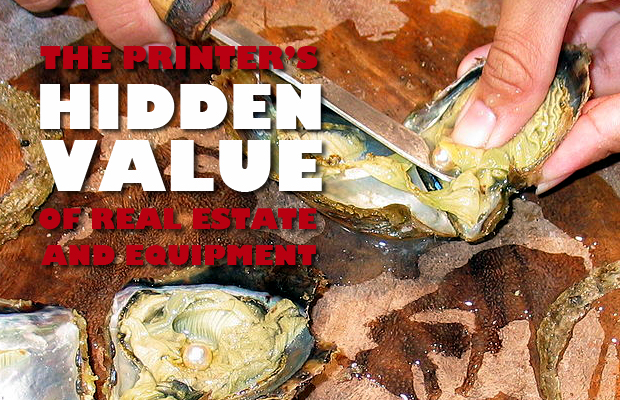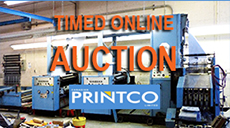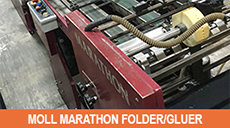In the printing industry, I’ve seen several examples
of prudent owners sharing my view and not only with
real estate but also with internal financing. Quite often
these two forces together are strong indication of a
healthy company, regardless of size. Businesses closely
held, generally family owned, have opted to self-finance
themselves.
What does that mean? Simply put if a piece of equipment
is being purchased or perhaps a building is being
bought, these businesses set up a new corporation, purchase
the asset, and then lease it back to themselves. I
have scene this scenario countless time when moving
around capital equipment. It may not be a possible for
everyone to employ this strategy, but it is one being utilized
by savvy business owners around the world.
Loblaw could easily do the same but has instead chosen
to spin off its real estate into a REIT that will continue
to rent space to itself. The Canadian tax laws
allowing for transference into these so-called trusts perhaps
provide a vehicle to shelter gains (like crystallizing
shares) and this could be the argument against simply
holding assets in a new company. Trusts usually will not
pay taxes as all profits are paid out to shareholders. Additionally,
there may be some substantial tax advantages
in a REIT as opposed to creating a new holding company.
Smaller businesses should reconsider how they
might want to take advantage of current low mortgage
rates in order to capitalize on a strong tenant (themselves),
all the while continually writing down the property year after year. Purchasing a building should not
be confused with speculating on condominiums of
other types of housing that can go into the tank by
speculators. You are your own tenant – that is the key
difference.

It is also possible to take this approach with printing
machinery, but the difference is the asset generally
does not increase in value. Even so, depending on what
rates you are offered, self financing still can be a way of
keeping more of what you make. The risks are much
higher because your cost of funds is a lot more than the
banks. In this business, larger funders make profits on
volume.
Banks and other financial institutions understand
real estate. They know profit on a mortgage can sometimes
take decades but they also appreciate real estate’s
security against inflation. Supplying a mortgage is not
mission impossible for these lenders, because they
know how to measure probability.
Of course, ownership is not without
risk: A new roof can cost hundreds of
thousands of dollars, or perhaps there
maybe environmental issues such as
contamination of soil that can cost millions.
General up-keep cannot be amortized
to a tenant but must be funded out
of cash flow. Just like a lease on a vehicle,
however, whether a tenant or owner, the
user eventually pays. These are the obvious
major downsides of real ownership.
Uncovering The Hidden Value
Machinery depreciation varies dependant
on country, application and governmental
incentives. Accountants use
this, of course, but they will not know if
there is hidden value. A zero-value piece
of production equipment can be assessed
differently through an appraisal,
which solidifies the value, or by a willing buyer. Goodwill
is much harder to value, because, unless your business
has long-term contracts, most assessors and even
buyers will look at the book of business as a moving
target of sorts. The same can be applied to Intellectual
Property. For the vast majority of printers, their process
is one of manufacturing and may not have any unique
or legally protected technologies.
There can be pleasant surprises for a printer, however,
when their plant floor is valued. For example, the
piece of equipment purchased for a special job, for that
customer now long gone, may have sat idle for years,
but, if it can be determined as unique or rare in the
market, it might be worth a lot more than imagined.
Strange as it may seem, equipment you would not take
a second look at for running a job today may hold values
you never thought possible. In my appraisal assignments
I’ve frequently uncovered dollars to the surprise
of clients.

Tony Langley and other sharp business owners understand
how to read a balance sheet. Moreover, they also
have an inane sense of looking through financials for
hidden treasure buried and depreciated. Although it is
considered old school now, many consolidators zero in
on extraordinary treasures like booked losses that can be
gained or out of date asset and real property values.
Look around your business and determine
if buying and holding real property
is doable. Look very hard at your
asset portfolio and ask if there is a surprise
or two. Companies like Loblaw
have all those shareholders to keep
happy, but do you? Remember, especially
in real estate, little else in the world
of business depreciates each year (on
paper) while appreciating in market
value. Every building owner knows this simple truth. It is time you, too, considered
it.
| |
| Six Hidden Value Questions For Every Printer |
1. Can you purchase a facility for similar monthly costs as renting?
2. What costs are expected to relocate?
3. Are there minimum requirements in electrical power and good location?
4. Do you really know the market value of your plant machinery?
5. Are there pre-paid costs that can be sellable to others?
6. If you now own a facility, should it be become a separate company?
|
|










